It takes a huge heart to be a dog rescuer, and not just in the “feeling empathy” context. Sometimes, you need a great deal of strength to withstand the heartache when finding a dog in terrible conditions.
When one of the volunteers of the Dog Care Clinic team found one lying helplessly in the nearby bushes, she immediately stopped in her tracks.
Starving, malnourished, and barely alive, the pup couldn’t do anything but give the woman a heartbreaking look, making her realize – he was abandoned there!
The Last-Minute Rescue
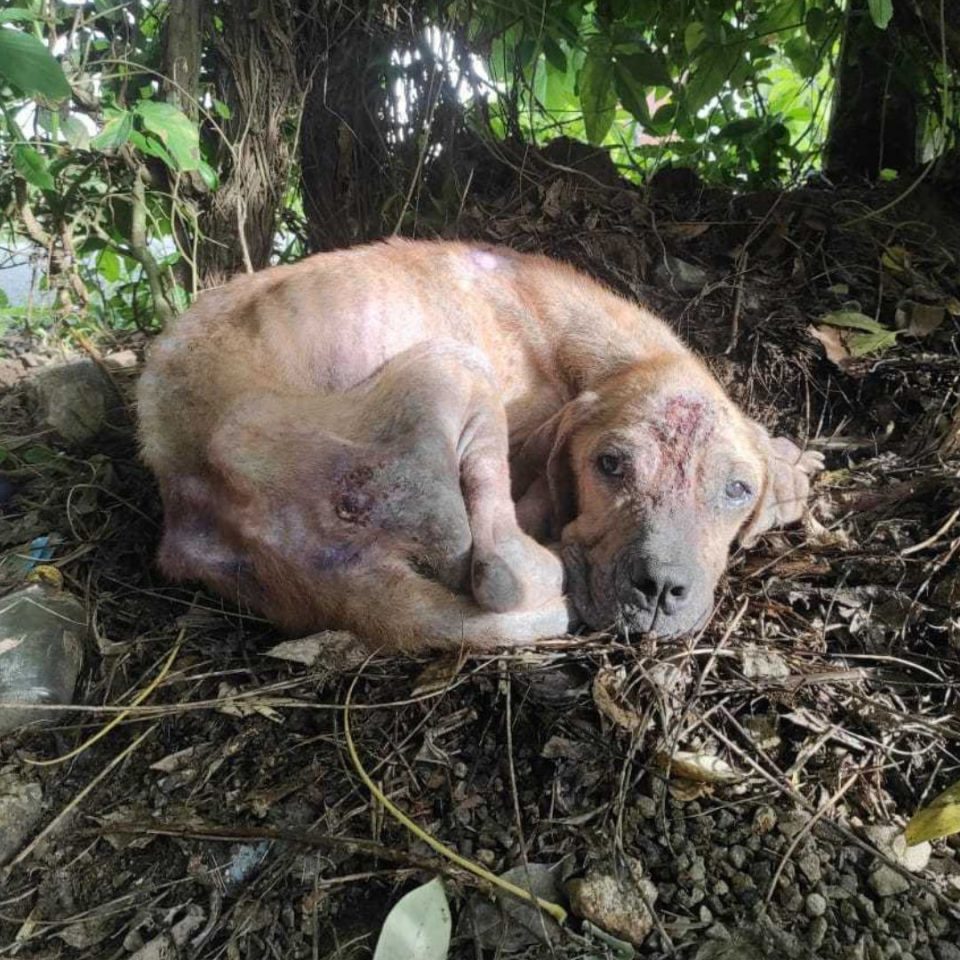
“First thing in the morning, we come to work, park at the parking lot and we couldn’t believe our eyes,” the rescue wrote on Facebook.
The dog was tied to a tree right next to the organization’s parking lot. Someone cruelly left him there for good without thinking twice – and now all he had in this world was his wounds from the past.
The volunteers spared no time to rush into action. Given the dog’s appearance, it was only a matter of time before they couldn’t help him anymore. He was less than 35 pounds, which was extremely below his normal weight.
Later named Pablo, this shy boi was hardly recognizable as a Boxer mix. He had wounds all over his body, which made it pretty hard to detect.
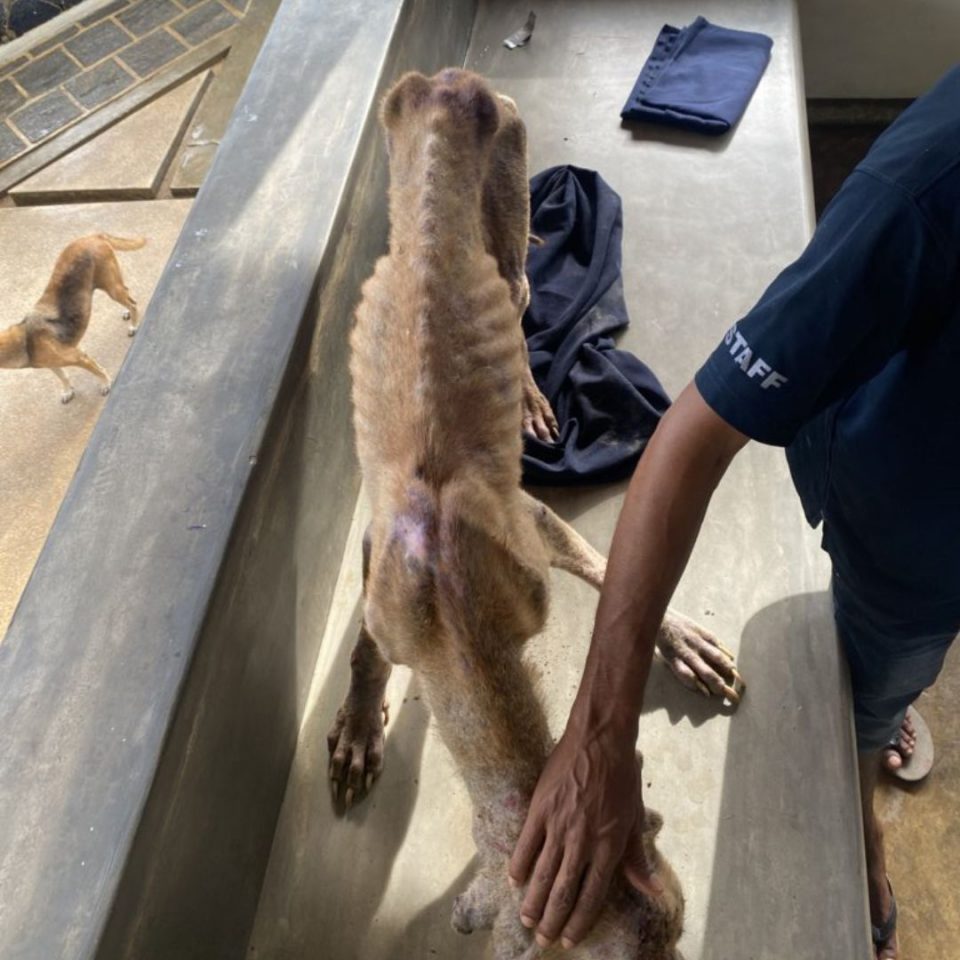
After the first checkup, he was diagnosed with a whole set of issues, including babesiosis and demodicosis.
He was literally only a few moments away from the inevitable, but the good people of DCC stumbled upon him just in time!
Remarkable Progress In Only Three Weeks
Even though it looked like Pablo’s recovery was a long shot – he took everyone by surprise in just a few short weeks!
Pablo, the scared pup, started receiving his treatment, and soon enough, he blossomed into a brand-new dog.

It was quite a challenge for his caregivers to get this doggo to trust them, but eventually, Pablo came out of his shell – completely. He started to go out and play with other dogs, as well as let people finally touch him and give him pats on the back.
Pablo’s trauma was still quite big, but it was evident that this boi was decompressing.
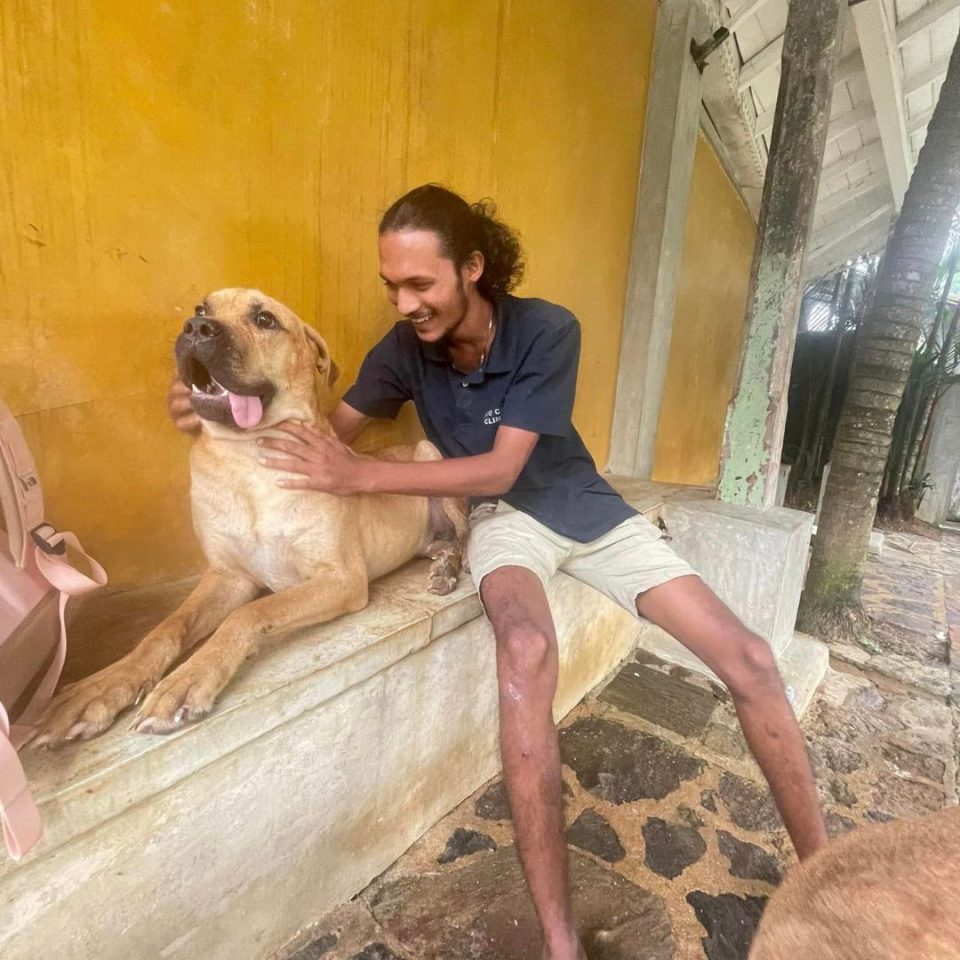
“His general condition was so bad that our vets weren’t sure if he would survive the coming days. Now, three weeks later, Pablo is not out of the wood yet, but he’s already made significant progress. His weight gain alone is remarkable,” the DCC team wrote on Facebook.
He finally learned what a loving hand of a hooman feels like. And, he made a lot of friends along the way, too!
A Brand-New Dog – With A Brand-New Story
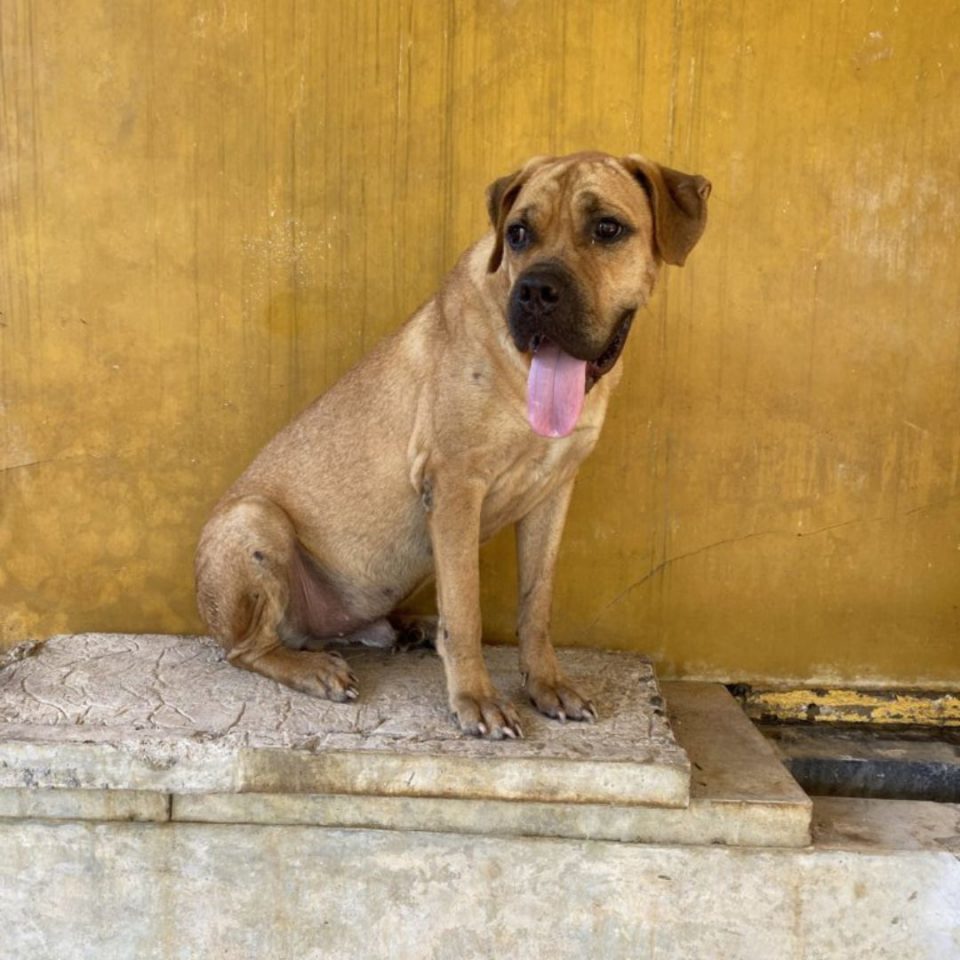
It didn’t take long for this sweet, now extremely active, dog to steal someone’s heart for life!
A local man who lives nearby met Pablo while visiting the facility, and he immediately fell in love. Pablo, on the other hand, reciprocated with a warm welcome for the new hooman – and this sweet encounter could only end one way.
The man decided to give this resilient canine another chance! He adopted Pablo, and from that day on – the two embarked upon a new life adventure together.
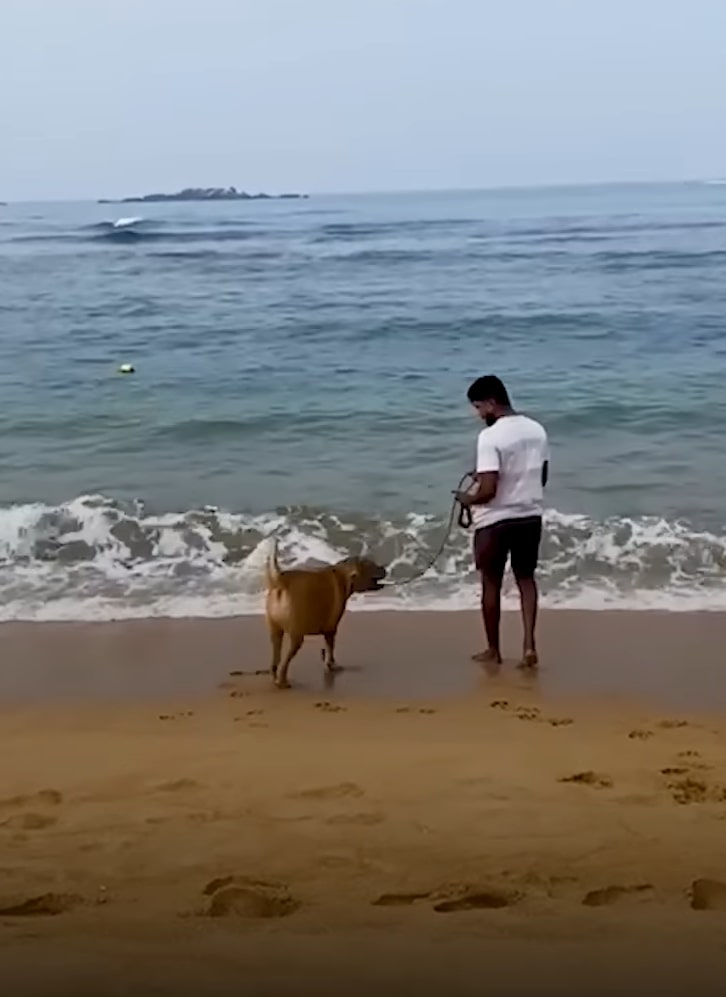
Today, this sweet dog lives the life he always dreamed of, and he couldn’t be happier.
Together with his hooman, he regularly visits the beach, which is his absolute favorite activity in the world! Despite everything he’d been through in his past, Pablo was finally in the right place, far away from neglect and abuse.
From now on, his days will be filled with love, laughter, and lots of cuddles!
If you’ve ever had a furry companion, you’ve probably noticed them shaking their heads from time to time. It’s a common sight that can leave you wondering what’s going on in their adorable little minds. Dogs have a unique way of communicating, and head shaking is just one of their many gestures. You may have observed this behavior during playtime, after a bath, or even when they wake up from a nap.
Head shaking in dogs can be quite intriguing, and there are various reasons why they do it. From getting rid of water in their ears to simply expressing excitement, there’s more to this action than meets the eye. Understanding why dogs shake their heads can give you valuable insights into their behavior and help you become even more in tune with your four-legged friend.
Understanding Dog Behavior: Head Shaking
The Basics of Canine Body Language
Dogs communicate a lot through body language, including head shaking. When a dog vigorously shakes its head, it might be trying to convey something. Pay attention to the situation and the dog’s overall behavior when interpreting their head shaking.
What Head Shaking Can Indicate in Dogs
Head shaking in dogs can signal various things, such as discomfort, irritation, or even excitement. It’s essential to observe your dog’s surroundings and behavior patterns to understand the specific reason behind their head shaking. If you notice persistent head shaking, it’s advisable to consult a vet to rule out any underlying health issues.
Common Reasons for Head Shaking in Dogs
Ear Infections and Problems
When dogs shake their heads excessively, it could signal ear infections or other ear-related issues. These problems may cause discomfort or pain, leading to the head-shaking behavior. If you notice redness, swelling, or an unusual odor around your dog’s ears, it’s essential to consult a vet promptly to address any underlying ear problems.
Presence of Foreign Objects
Sometimes, foreign objects like grass seeds, small insects, or debris can get lodged in a dog’s ear canal, triggering head shaking as a way to dislodge them. If your dog suddenly starts shaking its head persistently or pawing at its ears, there could be a foreign object causing irritation. Carefully examining the ear can help identify and remove any foreign bodies, but consult a professional if needed.
Skin Allergies and Irritations
Skin allergies or irritations can also lead to head shaking in dogs. Allergies to environmental factors, food, or even grooming products can cause itching and discomfort, prompting dogs to shake their heads to relieve the irritation. If you notice frequent head shaking accompanied by scratching or redness on the skin, it’s advisable to consult with a vet to determine the underlying cause and provide appropriate treatment.
Neurological Disorders
In some cases, head shaking in dogs may be linked to neurological disorders. Conditions like vestibular disease or tremors can manifest as uncontrollable head movements, which may appear as if the dog is shaking its head excessively. If your dog displays signs of imbalance, coordination issues, or abnormal head movements, seeking veterinary assistance is crucial to diagnose and manage any neurological conditions effectively.
When to Be Concerned About Your Dog Shaking Its Head
Identifying Abnormal Head Shaking
If your dog is shaking its head more vigorously or frequently than usual, it could indicate an underlying issue. Normal head shaking is brief and sporadic. However, repetitive, intense head shaking, tilting, or abnormal postures may suggest discomfort or pain.
Signs That It’s Time to Visit the Vet
Certain signs accompanying head shaking should prompt a visit to the vet. Look out for redness, swelling, or unusual odors around the ears. If you notice your dog pawing at its ears excessively, this could signal an problem. Additionally, skin irritations, balance issues, abnormal head movements, or the presence of any foreign objects in the ear should not be ignored. These signs warrant prompt veterinary attention to ensure your dog’s health and well-being.
Diagnosis and Treatment
How Vets Diagnose Head-Shaking Issues
When you take your furry friend to the vet for head-shaking problems, they will typically start by examining the ears closely. Vets look for signs of infections, such as redness, swelling, or unusual odors. They might also use a special tool called an otoscope to check for foreign objects in the ear canal. Additionally, your vet may inquire about your dog’s medical history and any recent changes in behavior to better understand the underlying cause of the head shaking.
Possible Treatments for Head-Shaking Dogs
The treatment for head-shaking in dogs varies depending on the underlying cause diagnosed by the veterinarian. If an ear infection is identified, your vet will likely prescribe antibiotics or antifungal medication to clear up the infection. In cases where foreign objects are causing the issue, the vet may need to remove them carefully. For allergies leading to head shaking, your vet might recommend dietary changes or prescribe medications to manage the symptoms. In more severe cases involving neurological disorders, treatment options could include medication, therapy, or surgery, depending on the specific condition. Your vet will tailor the treatment plan to address your dog’s individual needs effectively.
Preventing Head Shaking in Dogs
Regular Ear Cleaning and Care
To help prevent head shaking in your dog, it’s essential to maintain regular ear cleaning and care. You should gently clean your dog’s ears to remove dirt, debris, and excess wax regularly. Use a vet-approved ear cleaning solution and cotton balls to clean the outer part of the ears. Avoid inserting anything into the ear canal to prevent damage. By keeping your dog’s ears clean, you can reduce the likelihood of ear infections and discomfort that may lead to head shaking.
Managing Allergies and Parasites
Another crucial step in preventing head shaking is effectively managing allergies and parasites in your dog. If your dog has skin allergies, work with your vet to identify and eliminate potential triggers, such as certain foods or environmental factors. Use flea and tick preventatives as recommended to protect your dog from parasitic infestations. By addressing allergies and parasites promptly, you can minimize itching and irritation that may cause your dog to shake their head frequently.
Mental Stimulation and Stress Reduction
Providing your dog with mental stimulation and reducing stress can also help prevent excessive head shaking. Engage your dog in regular physical exercise and mental activities to keep them mentally and physically stimulated. Create a comfortable and safe environment for your dog, ensuring they have a quiet place to relax and unwind. By reducing stressors in your dog’s life and providing adequate mental stimulation, you can help them feel more relaxed and less likely to engage in repetitive head shaking behaviors.
Conclusion
So, there you have it – the reasons behind why your furry friend shakes their head. Understanding these causes can give you valuable insights into their health and happiness. Remember, head shaking can be a way for your pup to communicate discomfort or excitement. It’s crucial to stay on top of their ear health by cleaning them regularly and seeking veterinary care when needed. By taking preventive measures like managing allergies and keeping them mentally stimulated, you can help reduce the chances of ear infections and discomfort. Your dog’s well-being is in your hands, so keep an eye out for any signs of head shaking and take action to keep them feeling their best.
Frequently Asked Questions
Why do dogs shake their heads?
Dogs shake their heads for various reasons, such as removing water from their ears, expressing excitement, discomfort, or irritation. It can also be a way of communication to signal distress or discomfort.
What are some common causes of head shaking in dogs?
Common causes of head shaking in dogs include ear infections, foreign objects in the ear canal, skin allergies, and neurological disorders. Identifying the underlying cause is crucial for proper evaluation and treatment.
How can I prevent head shaking in my dog?
Prevent head shaking in dogs by maintaining regular ear cleaning, managing allergies and parasites, and providing mental stimulation and stress reduction. These preventive measures help reduce the risk of ear infections and discomfort in dogs.
[no_toc]

Hey there, I’m Janet Brooks, a dog-loving student from California. I’m all about helping pups in need, especially those without homes. Me and my awesome friends work together to give shelter and love to stray dogs. Oh, and I also write blogs about dogs to share helpful info.